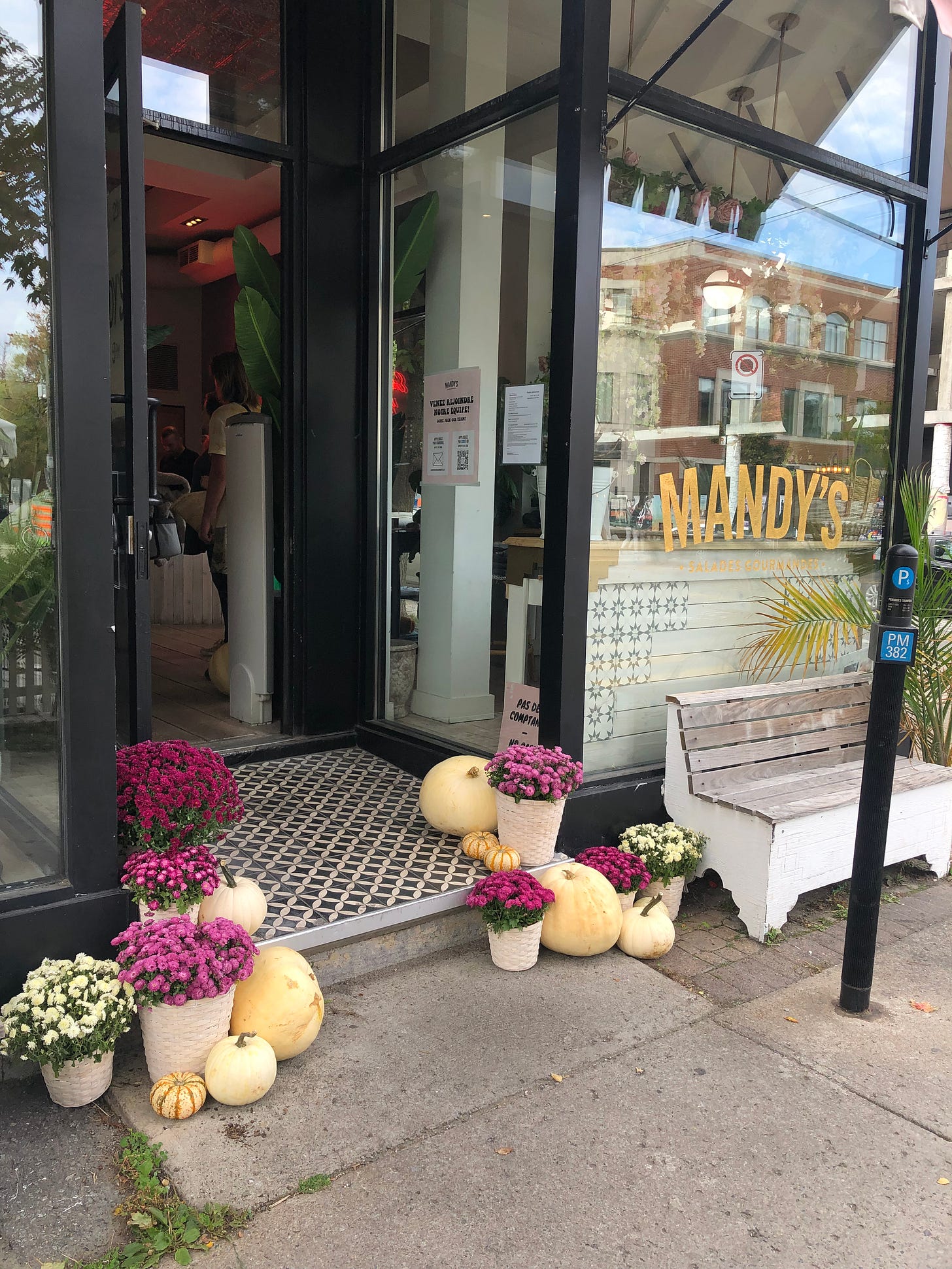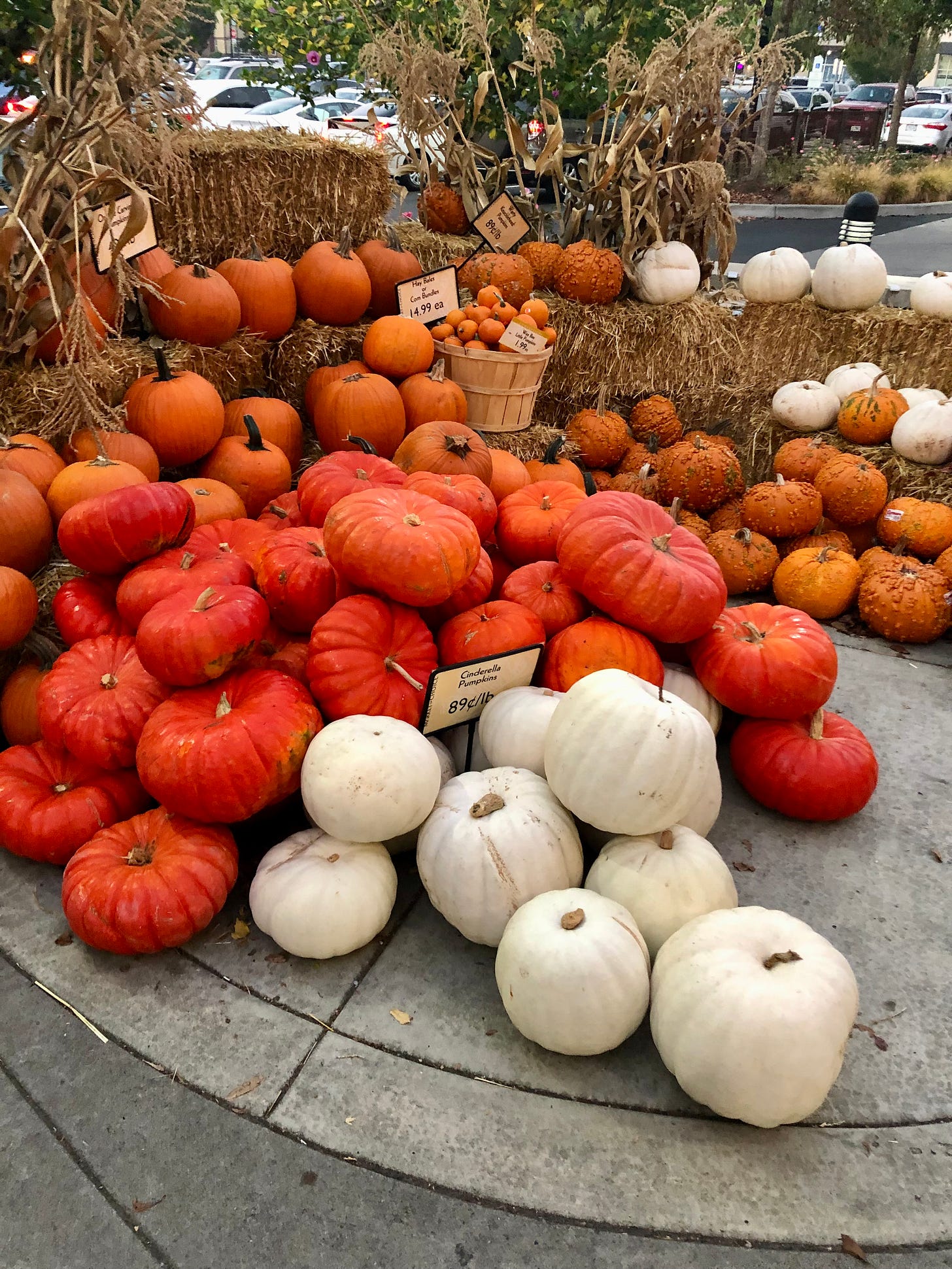Fall Decor & Women’s Role in Consumerism
How I put my guilt aside and decided what will bring me joy this autumn
My Love for Shopping
For as long as I can remember, I have loved shopping. I grew up accompanying my mom on her mall shopping trips. As a toddler I once even put shoes into the stroller, unbeknownst to my mom until the alarm sounded when we left the store. (Oops!)
When I was a bit older, I’d try on every shoe I could get my hands on in the Nordstrom shoe department. They were much too big, but it didn’t matter. It brought me such joy to get to experience this pleasure alongside my mom.
As I became a teenager, this excitement evolved into my mom and me attending Nordstrom’s anniversary sale every year, seeing what deals we could get our hands on. The shoes were often the best score—I still have and wear my knee-high black Frye boots that I acquired 5-10 years ago.
It wasn’t just clothing I loved shopping for. As I aged into college and my adult life, I started to enjoy the home goods shopping too. My mom’s visits in college were often filled with a shopping trip to see what novelties we might find at the local Eugene Home Goods.
This love for a good gift shop or boutique has persisted as I’ve established myself in adulthood. Be it with friends or by myself, whether traveling or at home, I love the chance to pop into a shop when it’s been a minute.
Just last weekend while in Denver with family, we stopped for coffee on our way to explore the Red Rocks. As we parked I spotted several cute shops along the main road, and after feeling guilty for a second, told my partner, brother, and his girlfriend that I was going to check out a few. I didn’t buy anything, nor did I necessarily expect to, but it was the appeal of the new shops, the thrill of the potential discovery that drew me in.
When I walked into the first gift shop, my eyes were immediately flooded with a Halloween merchandise display. I didn’t think much of it as this is something I’m used to seeing as the seasons change. But when my boyfriend walked into the store a little later, he commented on all the Halloween stuff, sounding a bit surprised.
That’s when I realized—wow, men aren’t accustomed to this nor do they feel pressure to spend on holiday-related items. It’s entirely made for women! One might say it’s preying on us, even.
Our “Responsibility” as Women to Shop
In her book On Our Best Behavior: The Seven Deadly Sins and the Price Women Pay to Be Good, Elise Loehnen explores greed as one of the many “sins” the patriarchy has encoded in us as women.
While commenting on women’s relationship to money she writes:
“We are trained away from money, taught it’s not really for us, and we are, at the same time, programmed by our cultural messaging to believe it’s our job to drive the economy by buying stuff. Society champions our consumerism.”
It wasn’t until I read her book that I realized how much of consumerism falls on women versus men. I knew that women hold the purse strings, so to speak, in that household spending is predominately controlled by the female in the household. (In case you need a stat to drive this home—89% of women worldwide play a role in daily shopping, versus only 41% of men.1)
But reading this passage put it into a whole new perspective for me. Our society is quite literally engineered to motivate women in particular to spend money on tangible, consumable goods.
It’s no surprise, then, that capitalism and consumerism have converged to manufacture spending moments for the home when there normally wouldn’t be a need to buy. That is, at the change of seasons or holidays. So much so that we’re used to seeing seasonal displays in the tiniest of gift shops, not just the mass manufacturers like Target or Costco.
We’ve normalized seasonally-relevant decor. And who do you think buys most of this? That’s right—women.2
Consciously Consuming Fall Decor
Since becoming a homeowner a few years ago, I’ve paid a lot more attention to seasonal decor and thought about what I want to add to my home. I’ve focused mostly on Christmas, slowly expanding that decor each year. What I don’t have a lot of is fall/Halloween stuff. I’ve tried to be mindful of buying too much seasonal decor based on the fact that it is temporary and not necessary. But where is the line between practicality and indulgence?
On my walk to the coffee shop yesterday morning, where I wrote most of this, I enjoyed joy-spotting various autumn and Halloween displays in people’s yards. My favorite is this house (pictured below) that goes all out on pumpkins, covering their yard and front porch walkway with what appears to be at least 50 pumpkins. Every time I'd walk by in years past I couldn't help but think, “wow, that must’ve cost them a fortune.”
But today I had a slightly different reaction. In thinking about my consumption patterns when it comes to seasonal decor, I think I can stand to be a little less rigid and guilt-ridden, allowing more room for joy.
For herein lies the irony with women and our patriarchal role to spend. For as much as we’ve been cultured to spend on stuff, we’re also taught to value security. It wasn’t until about 50 years ago that women in America could have their own bank account, let alone their own mortgage. It’s ingrained in us to be cautious with our money, for fear that we have to depend on a man for it.
Loehnen observed this with her own spending: “…the reality of a healthy bank account couldn’t counteract this feeling that letting go, having fun, being a little indulgent would destroy the promise of [financial] security.”
I felt that. Hard. I often feel guilt around spending money on seemingly “frivolous” things even though I have the means. Seasonal merchandise is the perfect example. Why spend my precious, hard-earned money on pumpkins or flowers that will soon die?
Yet I’ve spent money on decorative wooden pumpkins (that I admittedly forgot I had last year) because it seemed like the more practical choice since I could reuse them. But still I find myself, every fall, smiling at the pumpkin-adorned porches when I walk around my neighborhood.
There’s something that feels different to me about these markers of autumn, I think because they exist in our natural world. They are plants, after all, and represent the very crux of seasonal change.
So how does one separate what they truly want versus what’s answering an impulse to spend?
Some questions I am asking myself that may help you:
When does this item bring me joy — while acquiring it or while experiencing/using it? If only the former, that's a good indicator to leave it.
What will I do with this after the season? Do I have a place to store non-disposable things? Conversely, if they are disposable, do I have a sustainable way to throw them away? Which option makes me feel the best?
Where do I spend the most time in my home and thus where do I want to experience the item(s)? For example, do I want to be greeted by seasonal joy on my porch when I get home? Or when I am sitting in my home? Both?
Ultimately — why am I really buying this? (Expectation to spend, the thrill of the find, because it brings me joy, etc.) Am I okay with that answer? Then buy it!
With that, I am rewriting this limitation I've created for myself around fall decor and buying those damn pumpkins.
Sourced from Loehnen’s book, page 145
It was surprisingly challenging to find data on Halloween consumer spending by gender. This study is most indicative, showing that women are 33% more likely to decorate their homes for Halloween than men.







